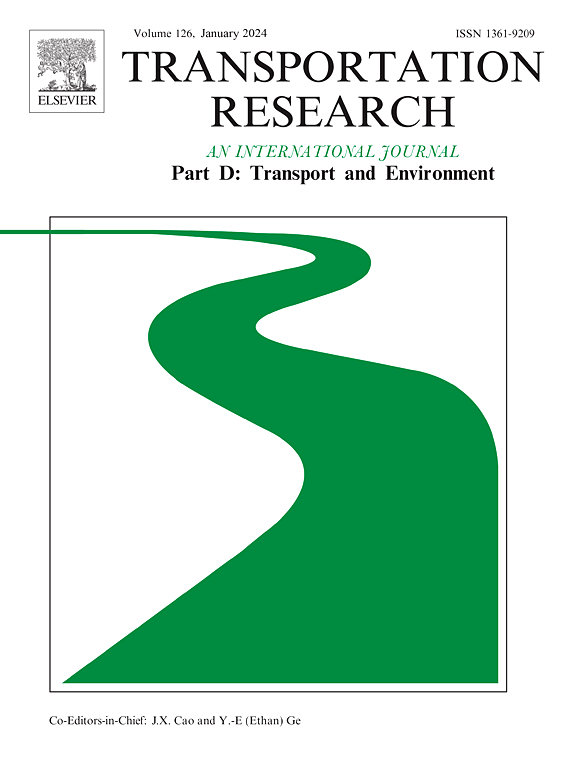Bridging access with life satisfaction and Nussbaum’s core capabilities
IF 7.3
1区 工程技术
Q1 ENVIRONMENTAL STUDIES
Transportation Research Part D-transport and Environment
Pub Date : 2025-06-16
DOI:10.1016/j.trd.2025.104877
引用次数: 0
Abstract
We explore how perceived access to destinations supports broader human capabilities such as play, health, joy, and wonder. Drawing on Nussbaum’s (2011) framework, we surveyed over 1,400 residents of Melbourne, Australia, asking whether their neighbourhoods support their capabilities “to do or be” in 26 aspects of life. We then applied a structural equation model to examine the interrelationships between demographics, perceived access, observed access (walkability and transit), activity participation, and life satisfaction. The models show that being male, owning a vehicle, and having more friends nearby are associated with higher perceived access, while financial difficulties and disability predict lower perceived access. Although walkability and transit access have a small negative direct association with life satisfaction, they exert positive indirect and total effects through increased perceived access and activity participation. These results underscore that accessibility—particularly as it is perceived—plays a meaningful role in individual well-being.
连接生活满意度和努斯鲍姆的核心能力
我们探索目的地的感知访问如何支持更广泛的人类能力,如玩耍、健康、快乐和惊奇。根据Nussbaum(2011)的框架,我们调查了澳大利亚墨尔本的1400多名居民,询问他们的社区是否支持他们在生活的26个方面“做或成为”的能力。然后,我们应用结构方程模型来检验人口统计学、感知可达性、观察可达性(步行性和交通)、活动参与和生活满意度之间的相互关系。模型显示,男性、有车、附近有更多的朋友与更高的感知可及性相关,而经济困难和残疾则预示着更低的感知可及性。尽管可步行性和交通可达性与生活满意度的直接负相关较小,但它们通过增加感知可达性和活动参与度而产生积极的间接和总影响。这些结果强调了可及性——特别是当它被感知时——在个人福祉中起着有意义的作用。
本文章由计算机程序翻译,如有差异,请以英文原文为准。
求助全文
约1分钟内获得全文
求助全文
来源期刊
CiteScore
14.40
自引率
9.20%
发文量
314
审稿时长
39 days
期刊介绍:
Transportation Research Part D: Transport and Environment focuses on original research exploring the environmental impacts of transportation, policy responses to these impacts, and their implications for transportation system design, planning, and management. The journal comprehensively covers the interaction between transportation and the environment, ranging from local effects on specific geographical areas to global implications such as natural resource depletion and atmospheric pollution.
We welcome research papers across all transportation modes, including maritime, air, and land transportation, assessing their environmental impacts broadly. Papers addressing both mobile aspects and transportation infrastructure are considered. The journal prioritizes empirical findings and policy responses of regulatory, planning, technical, or fiscal nature. Articles are policy-driven, accessible, and applicable to readers from diverse disciplines, emphasizing relevance and practicality. We encourage interdisciplinary submissions and welcome contributions from economically developing and advanced countries alike, reflecting our international orientation.

 求助内容:
求助内容: 应助结果提醒方式:
应助结果提醒方式:


